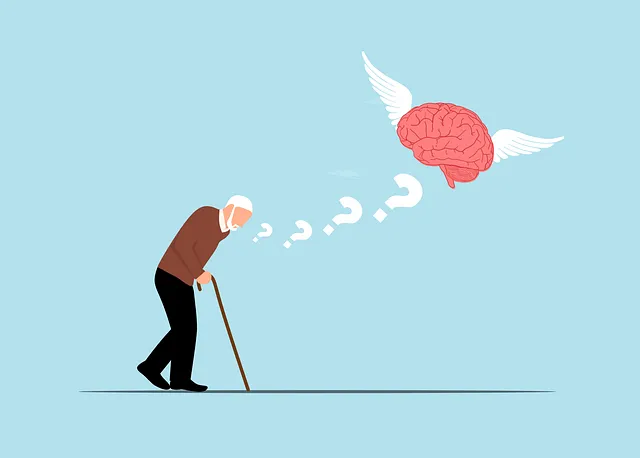Lafayette's Kaiser facility offers mental wellness programs evaluated through a blend of quantitative data (like diagnosis reductions and attendance records) and qualitative feedback from participants, ensuring services remain effective and adaptable. Programs emphasize self-care practices, holistic approaches, and continuous improvement based on stakeholder insights, distinguishing Lafayette with an alternative to traditional medical treatments.
Mental wellness program evaluations are crucial for measuring effectiveness and driving continuous improvement. This article explores various assessment methods, from metrics and surveys to stakeholder feedback, to understand the impact of mental health initiatives. We compare Lafayette’s and Kaiser’s services, delving into data analysis techniques that reveal trends and patterns. By examining these approaches, organizations can enhance their programs, ensuring they meet participants’ needs, ultimately improving overall mental wellness.
- Assessing Program Impact: Metrics and Surveys
- Stakeholder Feedback: Voices of Participants
- Data Analysis: Uncovering Trends and Patterns
- Comparisons: Lafayette vs Kaiser Services
- Continuous Improvement: Iterating for Effectiveness
Assessing Program Impact: Metrics and Surveys

Evaluating the impact of mental wellness programs is a multifaceted process that goes beyond mere satisfaction surveys. Organizations like Kaiser Permanente, including its Lafayette locations, employ a range of metrics to gauge success and identify areas for improvement. These include quantitative data such as reduction in mental health diagnoses, decrease in absenteeism due to stress-related issues, and improvements in employee engagement scores.
Qualitative assessments are equally vital, offering insights into participants’ emotional regulation, compassion cultivation practices, and overall sense of well-being. Surveys tailored to these aspects, incorporating elements of Cultural Sensitivity in Mental Healthcare Practice, can provide valuable feedback on the program’s effectiveness. By analyzing both numerical data and personal narratives, Kaiser Permanente ensures that their mental health services, like those offered at their Lafayette branch, remain responsive to the evolving needs of their diverse workforce.
Stakeholder Feedback: Voices of Participants

Lafayette’s Kaiser facility offers a range of mental wellness programs, and evaluating their effectiveness is crucial. One vital aspect of this process involves gathering stakeholder feedback, especially from participants. The insights gained from those who directly engage with these services provide a rich tapestry of information about program success and areas for improvement. By listening to the voices of participants, stakeholders can understand the impact of mental health education programs designed to foster resilience and boost confidence.
Compassion cultivation practices, for instance, can be assessed through participant feedback on their ability to integrate these skills into daily life. Similarly, evaluating how well-received and beneficial various therapeutic sessions are will offer valuable insights. This feedback loop ensures that the mental wellness programs at Lafayette’s Kaiser remain dynamic and responsive, catering to the evolving needs of those they serve.
Data Analysis: Uncovering Trends and Patterns

Evaluating a mental wellness program involves meticulous data analysis to uncover trends and patterns within the community it serves. By examining participation rates, engagement levels, and feedback from program participants, organizations like Lafayette’s Kaiser can gauge the effectiveness of their mental health services. This process includes delving into qualitative and quantitative data, such as survey responses and attendance records, to identify areas of success and potential challenges. For instance, analyzing trends in self-esteem improvement or inner strength development over time provides insights into the program’s impact on individual well-being.
The Mental Wellness Podcast Series Production can be a valuable tool in this analysis, offering a platform to capture and share participant stories and experiences. By listening to these narratives, evaluators can gain deeper understanding of the program’s influence on mental health within the community. This holistic approach ensures that services like those provided by Kaiser not only meet but exceed expectations, fostering environments where folks can thrive and develop lasting strategies for maintaining optimal mental wellness.
Comparisons: Lafayette vs Kaiser Services

When comparing Lafayette’s mental wellness program to Kaiser Services, one key area to examine is the breadth and depth of their respective services. Lafayette stands out for its holistic approach, offering a range of activities that promote mental wellness journaling exercise guidance. Through regular journaling prompts and reflective practices, individuals are encouraged to develop self-awareness, which is a crucial pillar of mental well-being. Additionally, Lafayette incorporates empathy building strategies into their programs, fostering supportive communities where participants can share experiences and learn from one another.
In contrast, Kaiser Services focuses more on structured therapeutic interventions and medical support for severe mental health conditions. While they provide excellent clinical care, their services might not delve as deeply into self-care practices like self-awareness exercises. For those seeking a more comprehensive program that nurtures both the mind and the spirit, Lafayette’s approach offers a compelling alternative or complement to traditional medical treatments.
Continuous Improvement: Iterating for Effectiveness

At Lafayette, Kaiser’s commitment to mental wellness extends beyond initial implementation. Continuous improvement is a cornerstone of their approach, ensuring that programs evolve and adapt to meet the changing needs of the community. Regular evaluation methods play a vital role in this process, allowing for iterative development of Mental Wellness Coaching Programs. By gathering feedback from participants and practitioners, Kaiser can pinpoint areas for enhancement, be it refining trauma support services or integrating new practices like mindfulness meditation.
This ongoing cycle of assessment and adjustment fosters effectiveness. It enables the organization to stay agile, responding swiftly to emerging trends in mental health care. Thus, Lafayette’s mental health services at Kaiser not only provide immediate relief but also contribute to a dynamic ecosystem where every touchpoint is an opportunity for growth, ensuring that support remains relevant and impactful over time.
Evaluating mental wellness programs is paramount to understanding their effectiveness, and by comparing methods used by Lafayette and Kaiser services, we’ve highlighted diverse yet impactful approaches. Through metric-driven assessments, stakeholder feedback, data analysis, and continuous improvement practices, both organizations enhance mental health support. While Lafayette excels in community engagement, Kaiser’s structured program delivery stands out, demonstrating that a combination of tailored strategies is key to improving mental wellness outcomes, answering the query: “Does Lafayette have better mental health services than Kaiser?” by illustrating their unique yet valuable contributions.






